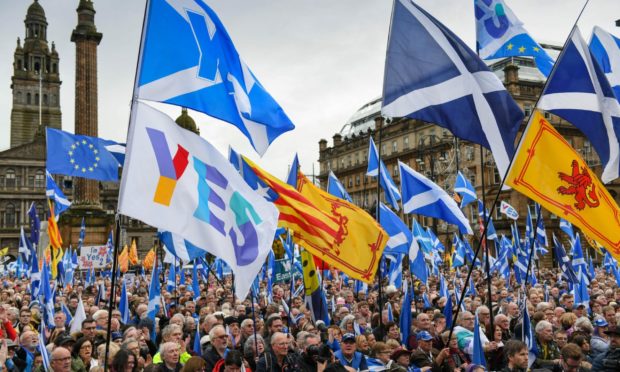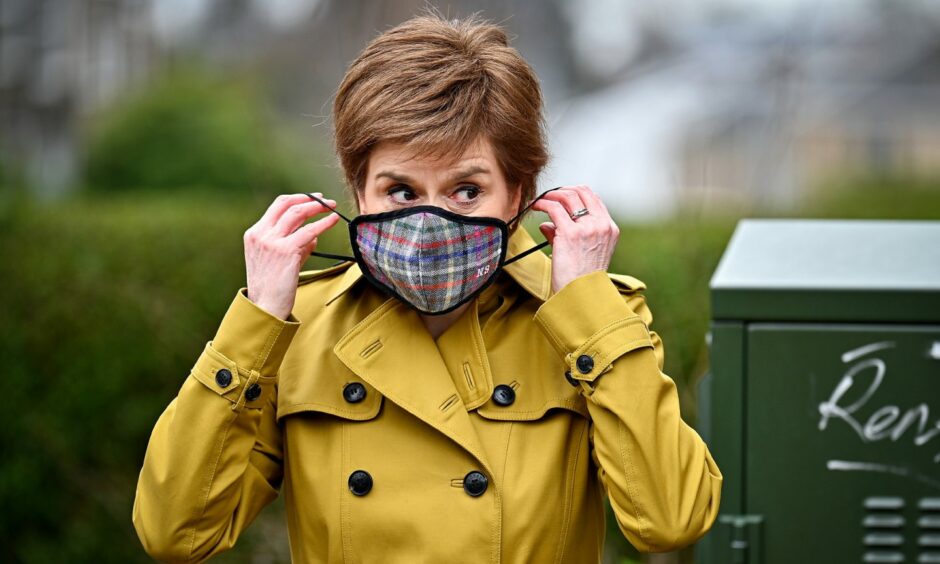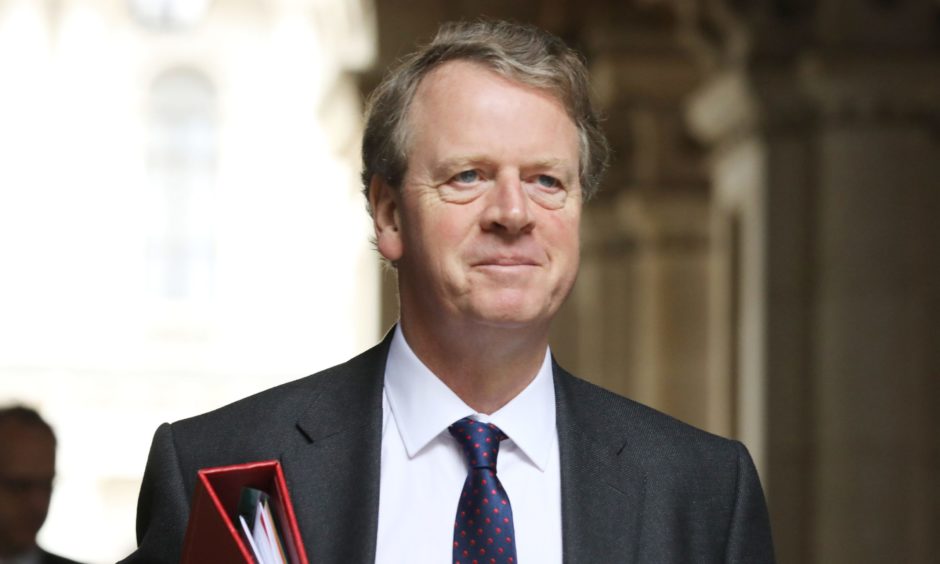A second independence referendum could take place if the number of voters backing another vote remained at 60% , the Scottish Secretary has revealed.
Alister Jack’s statement is the first time a minister has defined the conditions for allowing another vote on Scottish independence to take place.
The cabinet minister told Politico that support for having a referendum would have to be at 60% for a “reasonably long period”.
It comes after Cabinet Office minister Michael Gove – who is in charge of union policy – told the Sunday Mail that “if it is the case that there is clearly a settled will in favour of a referendum, then one will occur”.
‘Making up constitutional rules’
First Minister Nicola Sturgeon wants to have an independence referendum within the next five years, preferably by the end of 2023.
Speaking on Friday, she accused Mr Jack of “making up constitutional rules as he goes along”.
She added: “We have constitutional rules, that are pretty well established in a democracy, is that if a party wins the election on a particular proposition, they should get to implement that proposition.”
Although the SNP fell short of an overall majority, together with the Greens, pro-independence parties won a majority of seats in the Scottish Parliament election in May.
Asked to explain what would constitute the “settled will for another referendum, Mr Jack told Politico: “If you consistently saw 60% of the population wanting a referendum – not wanting independence but wanting a referendum – and that was sustained over a reasonably long period, then I would acknowledge that there was a desire for a referendum.
“Anyone can see that.
“But that’s not where we are and it’s not how I perceive things to be.
“I think I’m broadly where the public are, which is that now is not the time to be having a referendum.
“We’ve had one, we’ve made our decision, let’s get on and rebuild the economy and rebuild people’s lives.”
The most recent published opinion poll on whether there should be a referendum was conducted by Redfield & Wilton Strategies on August 4 and 5.
It found 42% support holding a referendum more than a year away but within five years, while 40% said they oppose having one in this timescale.
‘Democratic right’
Aberdeen South MP Stephen Flynn accused the Conservatives of “trying to dictate Scotland’s right to choose”.
The Tories won just 21.9% of the vote in the Scottish Parliament elections in May. Yet here they are trying to dictate Scotland’s right to choose. Democracy – UK style. https://t.co/DWBfLTUg9u
— Stephen Flynn MP (@StephenFlynnSNP) August 27, 2021
In response to Mr Jack’s remarks, Pete Wishart, MP for Perth and North Perthshire, said: “There will be a referendum on independence determined by our democratically elected parliament.”
The SNP’s shadow Scottish secretary Mhairi Black said her party had won the Holyrood election in May on a “cast-iron commitment to hold an independence referendum when the Covid crisis is over”.
She added: “It would be undemocratic and unsustainable for the Tories, who lost the election decisively, to block the democratic right of the people of Scotland to determine our own future.”


